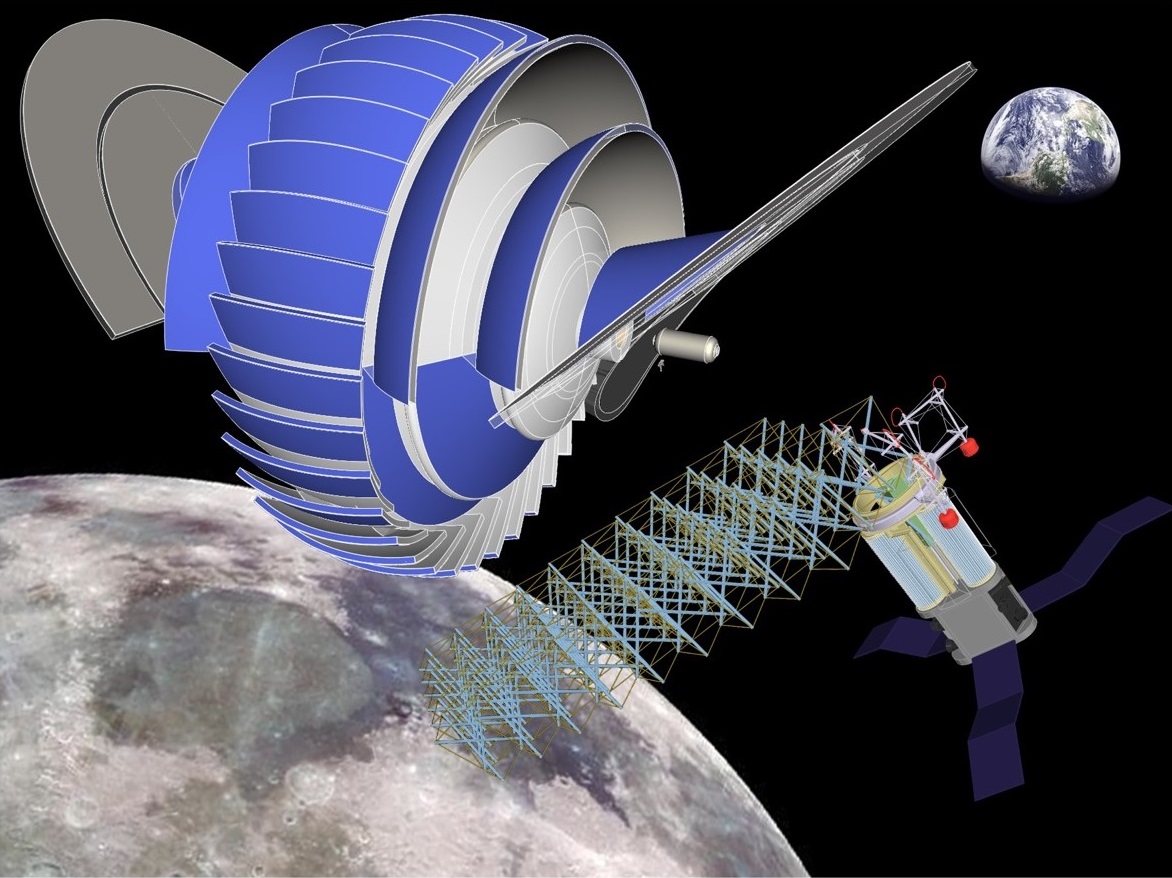Current Projects
Tensegrity Approaches to In-Space Construction of a 1g Growable Habitat
 |
This proposal seeks to design a rotating habitat with a robotic system that constructs the structure and provides a habitat growth capability. The tensegrity technology allows minimum mass of both the habitat and the robotic system. This proposal solves three unsolved space travel problems: a) growth, b) radiation protection, and c) gravity. Our innovative tensegrity-based evolvable habitat designs will solve three critical technical problems that NASA must address: the biological effects of microgravity on humans in long duration space flight, the long duration biological effects of ionizing radiation on human physiology in deep space (beyond the Earth's magnetosphere) and, the need for outposts in deep space to evolve dynamically over time as mission needs grow. Our technologies fit hand in glove with NASA's new strategy and will be a key enabler in making NASA's vision of pioneering the space frontier a reality because they are the only economically feasible approach to building habitats that can grow, spin, and manufacture in space. This NIAC Phase II effort will perform critical proof of concept studies, analysis, and ground demonstrations to prove the feasibility of Growth-Adapted Tensegrity Structures (GATS) and their benefit for NASA's evolvable proving ground approach to human exploration. As part of this effort we will conduct mission studies showing how a version 1.0 outpost in Lunar Distance Retrograde Orbit (LDRO) made from GATS can grow and evolve while utilizing asteroid resources for radiation shielding and later integrate with an asteroid ISRU system such as the NIAC funded ApisT M architecture proposed by Sercel. We will perform mission analysis in collaboration with Sercel showing how asteroid regolith slag left over from the production of rocket propellant can be accumulated over time in LDRO and integrated as radiation shielding into the structure of the GATS based evolvable outpost thereby saving many billions of dollars in launch costs and helping to make NASA's program of human exploration more affordable. The critical enabling technology for our GATS technology is Tensegrity Engineering, where new design methods, new dynamic models, and new control approaches are specialized for networks of axially-loaded elements, allowing the structural mass to be minimized, while the dynamic response can be controlled with minimal energy, with repairable, growable structural methods, using tractable analytical tools that are now available. We also capitalize on asteroid resources for radiation shielding of our habitat. This NIAC Phase II effort will perform critical proof of concept studies, analysis, and ground demonstrations to prove the feasibility of Growth-AdaptedTensegrity Structures (GATS) and their benefit for NASA's evolvable proving ground approach to human exploration.